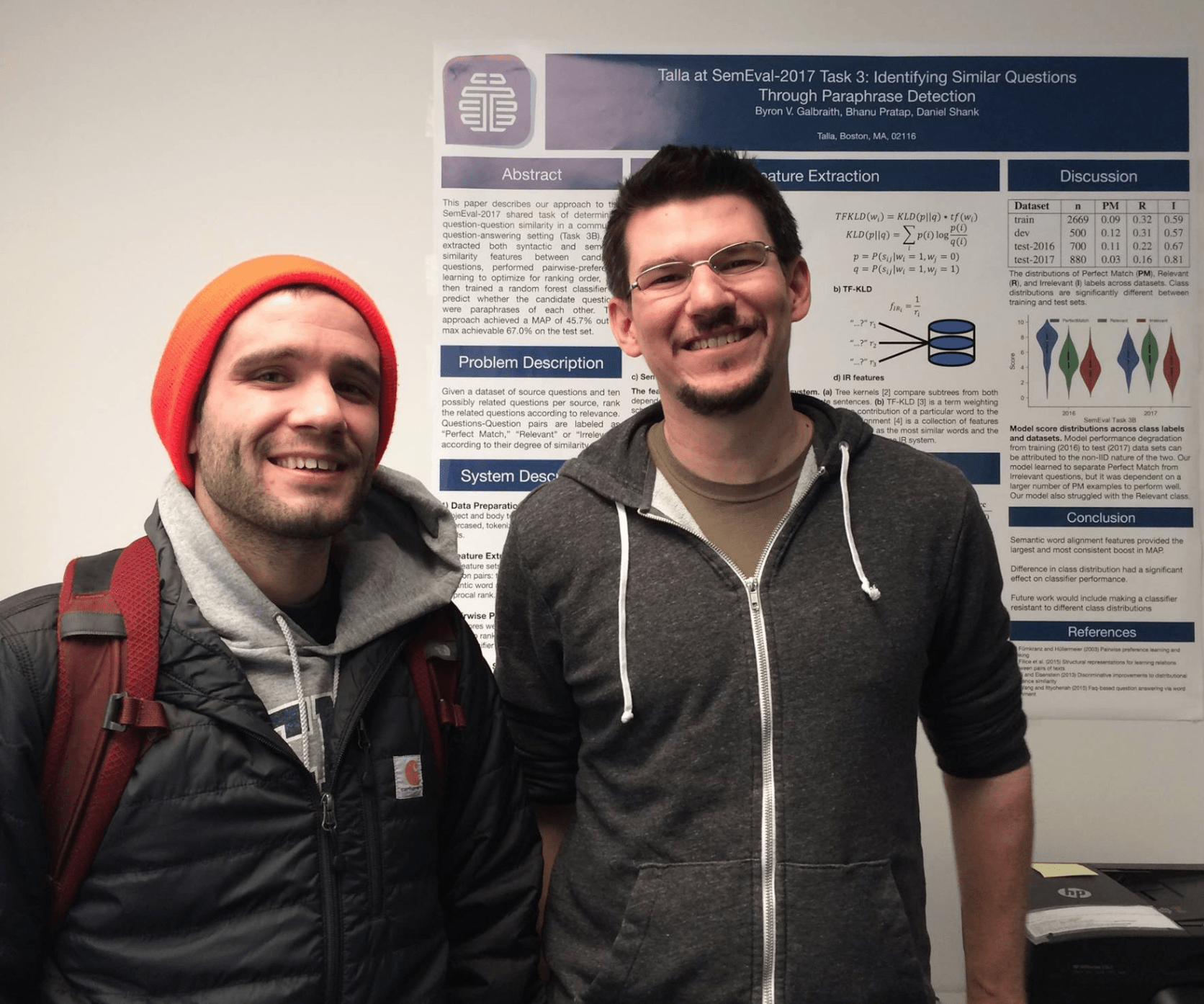
Episode summary: Most NLP applications we hear about involve marketing, customer service, and other customer-facing functions – but that there are NLP-related opportunities in other back-end functions as well.
In this episode of AI in industry, we speak with Talla’s Chief Data Scientist, Byron Galbraith, about how businesses can leverage chatbots or other NLP applications for improving document search for internal company communication. Byron explores what is currently possible using AI to improve search operations using contextual awareness. Byron also paints a vision of what AI-enabled “knowledge sharing” and “knowledge discovery” might look like in the future.
Subscribe to our AI in Industry Podcast with your favorite podcast service:
Guest: Byron Galbraith Co- Founder/Chief Data Scientist at Talla
Expertise: Neural Networks, Machine Learning, Cognitive Systems
Brief recognition: Byron has a Ph.D in Cognitive and Neural systems from Boston University and worked with Brain-computer interfaces for assistive robotic control during his tenure as research assistant there. Before he went on to be the Co-founder/Chief data scientist at Talla, he has also had previous experience as a research assistant at Marquette University for just under 2 years and as a Software developer for Table XI Partners LLC for 5 years.
Big Idea
Internal team communication management in a mid-sized organization is achieved typically through enterprise solutions like Sharepoint or Confluence. These solutions usually come with proprietary search tools which are not meant to function like advanced search algorithms (such as what you might expect from Google) making it potentially harder to find specific data within a company’s internal document search.
In this context, Byron explains that AI based solutions are best suited for internal knowledge-request search operations. For example, taking requests for information that exists within an organization like company wikis or PDFs and retrieving contextual excerpts for the user at a defined time and location.

He adds that this is especially true in cases where the scale of the organizations is large enough to make human operators highly inefficient in such tasks. Large-scale businesses can stay on top of making internal knowledge more accessible by tracking the creating and curation of company data.
For example, a typical search example in an enterprise environment might be a simple information request from employees about parking policies or information from an organization’s wiki about how a process works. Currently NLP platforms can improve internal search through querying using contextual awareness about the user and using personalization to provide disambiguated answers.
In the example this would translate to automatically searching for information about the parking policy in the location of the user (who might be based at the Los Angeles office), as opposed to a generic parking policy document (which deals with a dozen company locations).
Current platforms are also very capable in knowledge management tasks like suggesting what content might need additions based on user requests, and can automatically update and notify owners of documents etc.For example, an NLP platform can perform unsupervised clustering of an organization’s internal data and classify them into categories based off of similar word choices like human resources/productivity/location etc. In addition, the platform can proactively suggest changes based on the natural clustering of a company’s data. Continuing with the parking example, this would involve moving parking policy information for Los Angeles, to a location based cluster of documents.
Readers can learn more about how NLP is being applied in other real-world examples in marketing and advertising applications in our full article titled “Artificial Intelligence in Marketing and Advertising – 5 Examples of Real Traction“.
Interview Highlights with Byron Galbraith on AI for Team Communication
The main questions Byron answered on this topic are listed below. Listeners can use the embedded podcast player (at the top of this post) to jump ahead to sections they might be interested in:
(1:31) How does knowledge management and discovery work today in the context of team communications?
(4:55) What applications does NLP process for such an application work? What are the constraints on the system in terms of ordering search terms or ordering the required output data?
(7:27) What’s involved in the process of improving search by using personalization and contextual awareness?
(13:43) How can we label and organize data for NLP-based search when there are a hypothetically unlimited number of ways to organize it?
Subscribe to our AI in Industry Podcast with your favorite podcast service:
Header Image Credit: Adobe Stock











